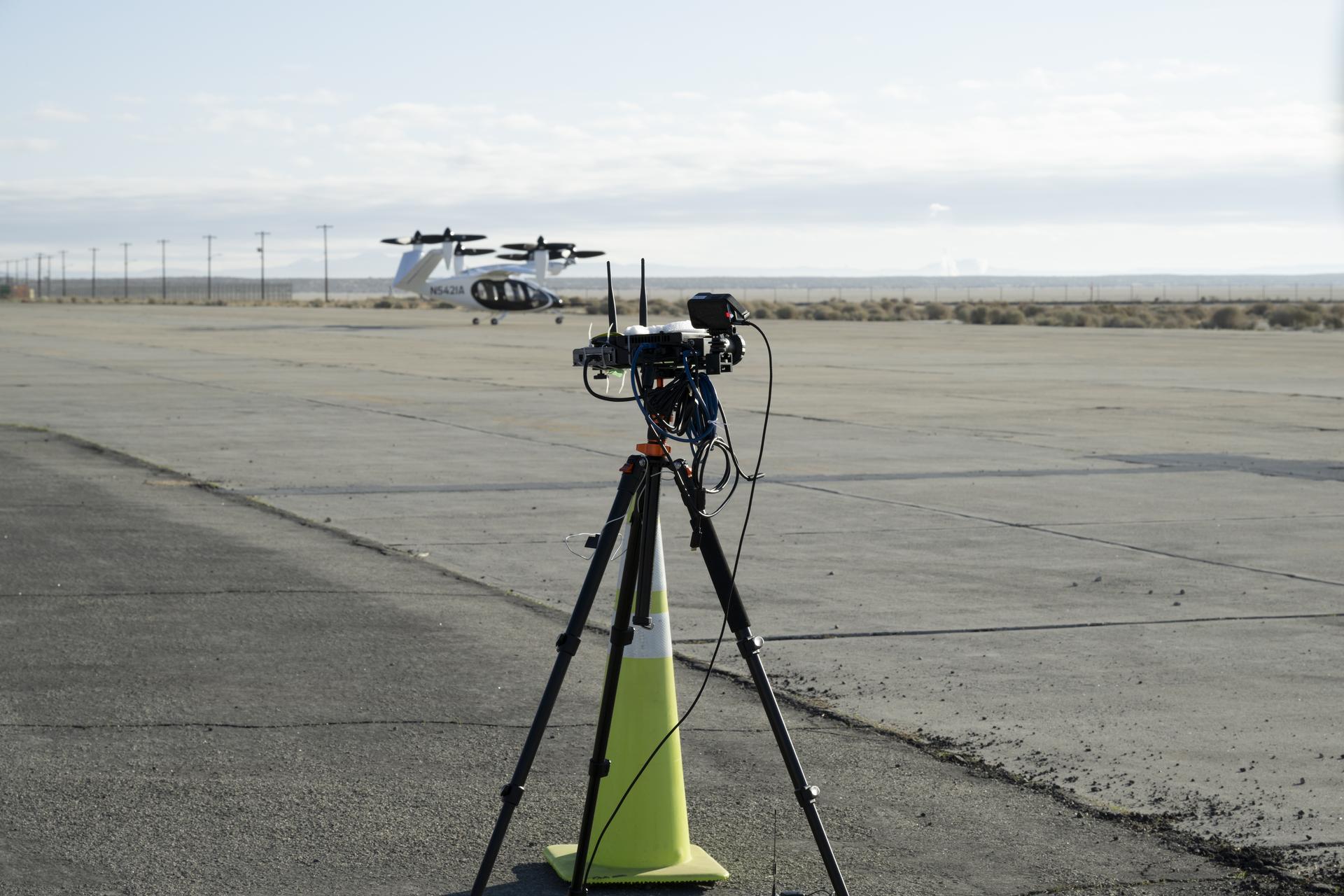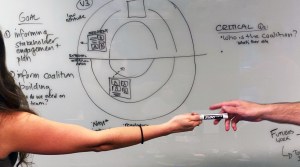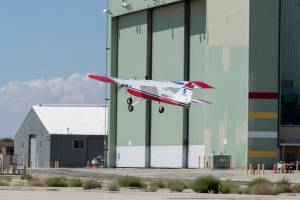The goal of NASA’s Convergent Aeronautics Solutions project is to rapidly assess the feasibility of novel concepts with potential to transform civil aeronautics and determine whether additional investment is warranted. Concepts that prove feasible are expected to transition into more focused technology development projects to mature and apply the enabling technologies.
Here is a summary of research proposals selected for participation in each round of the CAS project held to date.
(Principal Investigators, who are the team leaders, are listed along with the NASA research center they are based at. Those centers include the Langley Research Center in Virginia, Ames Research Center in California, Glenn Research Center in Cleveland, and Armstrong Flight Research Center in California.)
FY20-21 (Round 5) Activities
Solid-state Additively-manufactured Batteries for enhanced Energy, Recharging, and Safety (SABERS)
Exploring how to enable energy-intensive Advance Air Mobility and all-electric air vehicle designs through new battery technology that intrinsically meets rigorous aerospace safety and performance criteria.
Principal Investigators: Rocco Viggiano, James Wu (Glenn), and John Connell (Langley).
Download a PDF describing SABERS
Sensor-based Prognostics to Avoid Runaway Reactions & Catastrophic Ignition (SPARRCI)
Exploring how catastrophic battery failures can be avoided to enable safe next-generation ultra-high energy batteries for propulsive aircraft power.
Download a brochure about SPARRCI.
Principal Investigators: Bri DeMattia (Glenn), Dan Perey (Langley), and Susan Frost (Ames).
Download a PDF describing SPARRCI
Scalable Traffic Management for Emergency Response Operations (STEReO)
Exploring to what extent can an Unmanned Aircraft System Traffic Management ecosystem reduce response times, scale aircraft operations, and provide operational resiliency to dynamic changes during a disaster event.
Principal Investigators: Joey Mercer (Ames), Lou Glaab (Langley), and James Wu (Glenn).
Download a PDF describing STEReO
FY19-20 (Round 4) Activities
AdhEsive fRee BONDing of Complex Composite Structures (AERoBOND)
Seeking to increase manufacturing rate of composite airframes using a joining method with reduced dependence on redundant mechanical fasteners and improved reliability and manufacturability over currently available methods.
Principal Investigators: Frank Palmieri and Tyler Hudson (Langley).
Download a PDF describing AERoBOND
Aqueous, QUick-charging battery Integration For Electric flight Research (AQUIFER)
Exploring a novel integration concept using nano-electrofuel aqueous batteries and rim-driven motors to retire fire and explosion hazards, decouple power and energy, and reduce electromagnetic interference and noise for multiple electrified aircraft configurations.
Principal Investigators: Kurt Papathakis (Armstrong Flight), Linda Taylor (Glenn), and Robert McSwain (Langley).
High-Efficiency Electrified Aircraft Thermal Research (HEATheR)
Exploring the feasibility of managing the waste heat on a megawatt-level electric aircraft propulsion system while achieving performance and operational cost benefits.
Principal Investigators: Ralph Jansen (Glenn) and Kevin Antcliff (Langley).
Download a PDF describing HEATheR
FY18-20 (Round 3) Activities
Autonomy Teaming & TRAnsparency for Complex Trusted Operational Reliability (ATTRACTOR)
Building a basis for certification of trustworthy multi-agent autonomous systems based on explainable AI, persistent modeling and simulation, and mission planning and execution with analyzable trajectories.
Principal Investigators: Natalia Alexandrov and Danette Allen (Langley).
Download a PDF describing ATTRACTOR
Fit to Fly (F2F)
How will operators of commercial drone fleets know, for sure, that their vehicles are Fit2Fly? Automated inspection and live digital airworthiness certificates are parts of the answer. Using a combination of automated monitoring, inspection, and testing to create an auditable system to determine whether aircraft have sufficient airworthiness to perform their intended missions.
Principal Investigators: Garry Qualls (Langley) and Casey Bakula (Glenn).
Toward a Safe and Secure Future of Aviation through Quantum Communication and Computation (QTech)
Harnessing the power of quantum computing for optimization and key distribution to assure reliability of communications needed for traffic management of autonomous aircraft networks.
Principal Investigator: Eleanor Rieffel (Ames) and Adam Wroblewski (Glenn).
FY18-19 Incubation Activities (sample)
TAiloRing Materials and Manufacturing AutomatiCally (TARMMAC)
Exploring the use of clear box data science and high-performance computing to streamline the development of additively manufactured aeronautics structures.
Prognostics as a Service (PaaS)
Exploring the idea of leveraging cloud resources to provide wide access to precise and timely system failure prediction (prognostics) information to improve decision-making capabilities.
MAchine learning ESTimations for uRban Operations (MAESTRO)
Enhancing the safety and efficiency of urban UAS operations by providing onboard estimation of urban winds through machine learning and commodity airborne sensors without requiring GPS.
FY17-19 (Round 2) Activities
Compact Additively Manufactured Innovative Electric Motor (CAMIEM)
Developing new innovative electric motor topologies enabled by additive manufacturing that significantly increase the state-of-the-art in electric motor power densities.
Principal Investigators: Michael Halbig and Peter Kascak (Glenn).
Conformal Lightweight Antenna Structures for Aeronautical Communication Technologies (CLAS-ACT)
Developing a conformal microwave antenna based on an ultralight and thin aerogel that can conform to the aircraft’s contours – avoiding interference, reducing drag, fuel burn and emissions.
Principal Investigators: Mary Ann Meador and Jim Downey (Glenn).
Fostering Ultra-Efficient, Low-Emitting Aviation Power (FUELEAP)
Leveraging technology convergence in high-efficiency Solid Oxide Fuel Cells, high-yield fuel reformers, and hybrid-electric aircraft architectures to develop tightly integrated power system producing electricity from hydrocarbon fuels at twice the combustion efficiencies.
Principal Investigator: Nick Borer (Langley).
Lithium Oxygen Batteries for NASA Electric Aircraft (LION)
Investigating feasibility of designing ultra-stable electrolytes that are resistant to decomposition so that batteries last longer, allowing electric-powered aircraft to fly farther.
Principal Investigators: John Lawson (Ames) and Vadim Lvovich (Glenn).
Spanwise Adaptive Wing (SAW)
Increasing aircraft efficiency by articulating outboard portions of the wing using shape memory actuators to allow the size of the rudder to be reduced while maintaining stability.
Principal Investigators: Matthew Moholt (Armstrong Flight) and Othmane Benafan (Glenn).
FY16-FY18 (Round 1) Activities
Aeronautics Autonomy Testbed Capability (AATC)
Investigates new approaches for developing a UAS testbed capability that can address a variety of autonomy research questions.
Principal Investigators: Anna McGowan and Robert McSwain (Langley).
Autonomous Operating System for Unmanned Aerial Vehicles (AOS4UAVs)
Developing an autonomous pilot that can fly in National Air Space and Advanced Air Mobility scenarios using an open flight software framework that expands capabilities through apps from multiple parties.
Principal Investigators: Michael Lowry and Anupa R. Bajwa (Ames).
Design Environment for Novel Vertical Lift Vehicles (DELIVER)
Demonstrates whether it is possible to apply current conceptual design tools to small and novel vertical lift vehicle designs, and to improve those tools with new technologies for usability, operability, and community acceptance.
Principal Investigator: Colin Theodore (Ames).
Digital Twin
Explores developing a computer model that can more accurately predict how a future aircraft will perform over time and accelerate certification while still assuring safety and reliability.
Principal Investigators: W. Paul Leser and Jake Hochhalter (Langley).
High Voltage Hybrid Electric Propulsion (HVHEP)
Studies whether lightweight, efficient power distribution systems could replace petroleum fueled aircraft propulsion systems.
Principal Investigators: Raymond Beach and Linda Taylor (Glenn).
Learn to Fly (L2F)
Explores whether aerodynamics modeling, adaptive controls, computers, and sensors can shave years and dollars off designing, building, testing, and certifying new aircraft.
Principal Investigators: Jay Brandon and Mark Croom (Langley).
Mission Adaptive Digital Composite Aerostructure Technologies (MADCAT)
Exploring the idea of using emerging digital composite manufacturing methods to build an ultra-lightweight, adaptable wing.
Principal Investigators: Sean Swei and Kenny Chueng (Ames).
Multifunctional Structures for High Energy Lightweight Load-Bearing Storage (M-SHELLS)
Evaluates whether it is possible to use nanotechnology to create aircraft structures that can also store electrical power.
Principal Investigators: Pat Loyselle, Diana Santiago (Glenn) and Eric Olson (Langley).
Scalable Convergent Electric Propulsion Technology Operations Research (SCEPTOR)
Evaluates the impacts of using distributed electric propulsion through a rapid concept-to-flight demonstration to enhance safety while also reducing costs, noise, and emissions.
Principal Investigators: Mark Moore (Langley), Sean Clarke and Tom Rigney (Armstrong Flight).
X-Plane
Develops a cost-effective approach to accomplishing flight research with large-scale experimental airplanes to test solutions to technical challenges associated with ultra-efficient, future aircraft designs.
Principal Investigators: Mike Frederick and Steve Jacobson (Armstrong Flight).
FY15-FY16 (Round 0) Activities
Vehicle Integrated Propulsion Research (VIPR)
VIPR is a series of ground-based on-wing engine demonstrations to mature aircraft engine health management technologies.
Principal Investigator: John Lekki (Glenn).
Download a PDF for a CAS project overeview


































